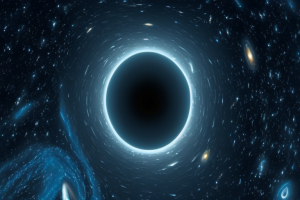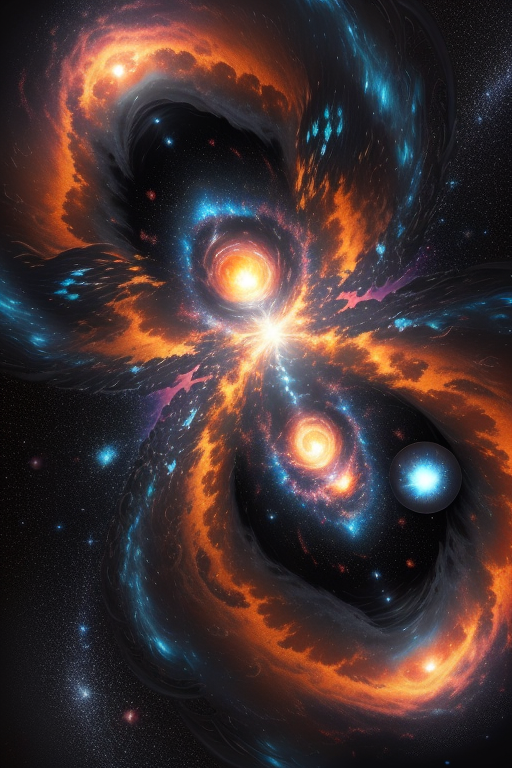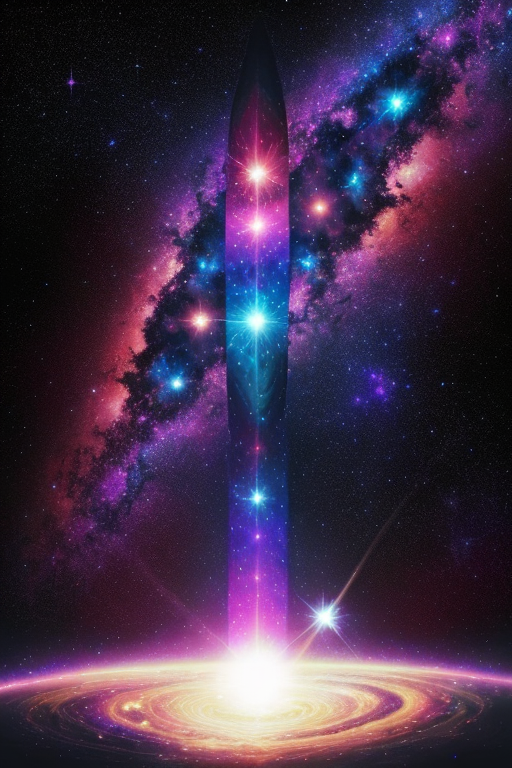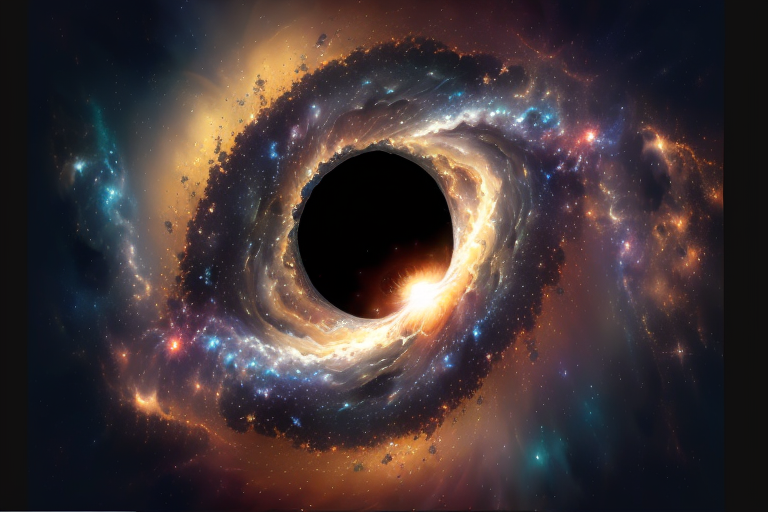Table of Contents
- Introduction: The Enigma of Black Holes
- Understanding Gravity and Stellar Evolution
- Birth of a Black Hole: Stellar Collapse
- Anatomy of a Black Hole
- Event Horizon: The Point of No Come Back
- Singularity: The Core Essence of a Black Hole
- Spaghettification: The Bizarre Effect of Tidal Forces
- Supermassive Black Holes: Giants of the Universe
- Black Hole Detection and Observation
- Black Holes and the Theory of General Relativity
- Black Hole’s Influence on the Evolution of Galaxies
- The Future of Black Hole Research
- The Unanswered Questions: Mysteries of Black Holes
- Conclusion
- Frequently Asked Questions (FAQs)
1. Introduction: The Enigma of Black Holes
Black holes have captivated the human imagination for decades. These enigmatic celestial entities wield an unfathomable gravitational influence, rendering them impervious to the escape of any form of energy, including light. In this article, we will delve into the depths of black holes, exploring their nature, formation, and the profound impact they have on the universe.
It is He Who created the Night and the Day, and the sun and the moon: all (the celestial bodies) swim along, each in its rounded course.
Quran 21:33
2. Understanding Gravity and Stellar Evolution
To comprehend the nature of black holes, we must first grasp the concept of gravity and the process of stellar evolution. Gravity is the fundamental force that governs the motion of celestial bodies, attracting them towards one another. Stars, like our Sun, are born from vast clouds of gas and dust, undergoing a transformative journey throughout their lifespan.
3. Birth of a Black Hole: Stellar Collapse
When a massive star reaches the end of its life, it undergoes a catastrophic event known as a supernova. The core of the star collapses under its own gravitational pull, resulting in the formation of a black hole. This process is governed by the delicate balance between gravity and the forces that support the star against collapse.
4. Anatomy of a Black Hole
A black hole consists of three key components: the event horizon, the singularity, and the accretion disk. The event horizon marks the precipice from which no object can evade the inexorable gravitational grip exerted by the black hole. The singularity is a point of infinite density and gravity at the center of the black hole. Surrounding the singularity is the accretion disk, a swirling disk of matter that is gradually pulled into the black hole.
5. Event Horizon: The Point of No Come Back
The event horizon is a defining characteristic of black holes. It marks the point of no return, beyond which the gravitational pull becomes so strong that even light cannot break free. Anything that crosses the event horizon is destined to be consumed by the black hole, disappearing from our observable universe.

6. Singularity: The Core Essence of a Black Hole
At the heart of a black hole lies the singularity, a region of spacetime where gravity becomes infinitely strong and the laws of physics as we know them break down. It is a point of immense density, where matter is crushed to an infinitesimal point and space becomes infinitely curved.
7. Spaghettification: The Bizarre Effect of Tidal Forces
As objects approach a black hole, they experience a phenomenon known as spaghettification. The tidal forces near the black hole are so strong that they stretch and deform the object into long, thin strands resembling spaghetti. This bizarre effect is a consequence of the extreme gravitational gradient near the black hole.
8. Supermassive Black Holes: Giants of the Universe
While stellar black holes are formed from the collapse of massive stars, there exist even more massive entities known as supermassive black holes. These colossal behemoths reside at the centers of galaxies, weighing millions or even billions of times the mass of our Sun. The origin of supermassive black holes is still a subject of intense scientific investigation, with various theories proposing processes such as rapid accretion and mergers of smaller black holes.
9. Black Hole Detection and Observation
Detecting and observing black holes is a complex task, given their elusive nature. Scientists employ a variety of techniques, including studying the gravitational effects on nearby objects, observing X-ray emissions from accretion disks, and analyzing the subtle changes in light as objects orbit black holes. Recent advancements in technology and the development of space-based observatories have significantly enhanced our understanding of these mysterious entities.
10. Black Holes and the Theory of General Relativity
Albert Einstein’s theory of general relativity revolutionized our understanding of gravity and predicted the existence of black holes. According to this theory, the immense gravitational pull of a black hole warps the fabric of spacetime, creating a gravitational well from which nothing can escape. The study of black holes provides critical insights into the fundamental laws of the universe and serves as a testing ground for theories of gravity.
Gravity is the result of mass and energy curving the fabric of spacetime, as described by the general theory of relativity.
Albert Einstein in 1915
The curvature of spacetime caused by mass and energy. It states that massive objects, such as planets and stars, deform the fabric of spacetime, causing other objects to move along curved paths. It also predicts phenomena like gravitational time dilation and gravitational waves.
11. Black Hole’s Influence on the Evolution of Galaxies
Black holes play a vital role in shaping the evolution of galaxies. As matter falls into a black hole through its accretion disk, enormous amounts of energy are released in the form of jets and powerful outflows. These energetic processes influence the surrounding interstellar medium, regulate star formation, and can even trigger the formation of new stars. Understanding the interplay between black holes and their host galaxies is crucial for unraveling the mysteries of cosmic evolution.
12. The Future of Black Hole Research
The study of black holes continues to push the boundaries of scientific exploration. New missions and instruments are being developed to investigate these cosmic wonders with unprecedented detail. Future endeavors aim to capture direct images of black holes, explore their interactions with gravitational waves, and deepen our understanding of their fundamental properties. Advancements in technology and theoretical frameworks promise to shed more light on the nature of black holes in the coming years.
13. The Unanswered Questions: Mysteries of Black Holes
While significant progress has been made in understanding black holes, many questions remain unanswered. Scientists are actively investigating phenomena such as black hole information paradox, the behavior of matter near the singularity, and the ultimate fate of objects consumed by black holes. Exploring these mysteries will not only expand our knowledge of the cosmos but also challenge our understanding of the fundamental laws that govern the universe.
14. Conclusion
In conclusion, black holes stand as celestial enigmas that continue to fascinate and astound us. These cosmic entities, born from the collapse of massive stars or residing at the centers of galaxies, possess gravity so intense that they defy our current understanding of physics. Through ongoing research and technological advancements, we strive to unlock the secrets they hold and gain deeper insights into the workings of the universe.


The immense gravitational force exerted by a massive black hole causes distortion in the space around it.
15. Frequently Asked Questions (FAQs)
- Q: Can anything escape from a black hole?
A: No, nothing can escape from a black hole beyond its event horizon, not even light. - Q: Are black holes dangerous to Earth?
A: Black holes located far away pose no threat to Earth. Their immense gravitational pull only affects objects in close proximity. - Q: Can we travel through a black hole?
A: The current understanding of black holes suggests that traveling through them would be impossible. The intense gravitational forces near the singularity would tear apart any known form of matter. However, the theoretical aspects of black holes are still being explored, and future discoveries may provide new insights into this question. - Q: Do black holes last forever?
A: According to our current understanding, black holes have an incredibly long lifespan. However, due to the phenomenon of Hawking radiation, black holes gradually lose mass and energy over time. In an extremely vast timeframe, black holes will eventually evaporate completely, leaving behind only trace amounts of radiation. - Q: Can black holes merge?
A: Yes, black holes can merge together through a process called black hole coalescence. When two black holes come into close proximity, their gravitational attraction causes them to orbit one another. Over time, they spiral closer and eventually merge, releasing an enormous amount of energy in the form of gravitational waves. - Q: Are there any black holes in our galaxy?
A: Yes, there are black holes in our galaxy, including a supermassive black hole at the center of the Milky Way called Sagittarius A*. Additionally, there may be numerous stellar black holes scattered throughout the galaxy, remnants of massive stars that have undergone supernova explosions. - Q: Can black holes be used for time travel?
A: While the concept of time travel is often associated with black holes in popular culture, there is currently no scientific evidence to support the idea that black holes can be used as portals for time travel. The extreme conditions near black holes make their interactions with time highly complex and speculative.
